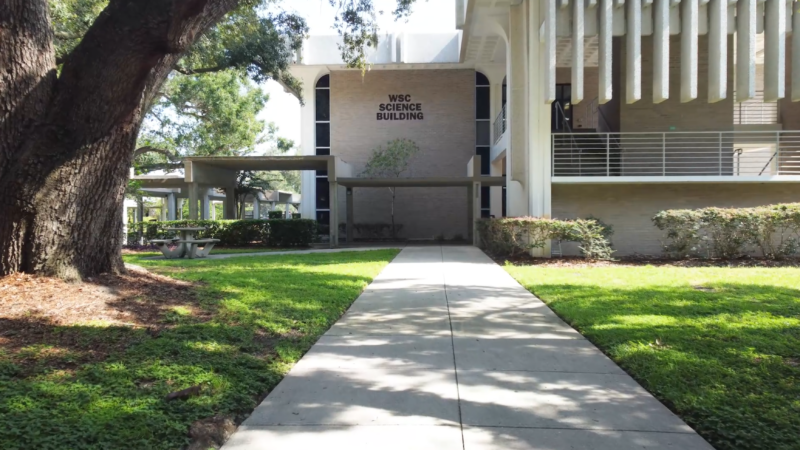Polk State College makes way on Winter Haven Science Building renovation

The possibilities aren’t quite endless, but they are vast as to what can be accomplished as Polk State College’s Winter Haven Science (WSC) Building undergoes a major renovation.
Built in 1966, the 51,000-square-foot building will receive a much-needed transformation with construction to start late this year. Upgrades were made possible by a $16.7 million allocation of Public Education Capital Outlay (PECO) funds by the Florida Legislature during the 2022 session.
“The enhancements and improvements…are exciting,” said Kim Thomas Manning, Dean of Academic Affairs. “These enhancements will allow our students to learn current practices with current equipment that is out in the field, so that when they go out into the STEM (Science, Technology, Engineering, and Mathematics) fields, they will be adequately prepared.”
The project is currently in the planning and design phase. Interior renovations will include science labs, classrooms, and offices. Roofing, brick, and window repairs and replacements are possibilities for the outside of the building.
“We’re teaching in rooms – they’re good rooms, don’t get me wrong – but they’re out of date,” Professor Anthony Rizzo said. “Once we have rooms that are updated, we’ll be able to teach very effectively and efficiently.”
The planning effort for the project has been a collaborative one with each department housed in the building weighing in with wants and needs. Professor KT Moran, Professor of Earth Science, Department Chair for Physical Sciences, and a member of the WSC renovation committee, has been a key voice during the current phase.
“This process has been collaborative between multiple portions of campus, including Facilities, our administration, and faculty, especially those who are actually going to work in the building,” Moran noted. “We were able to start moving last year to go through the selection process for both an architect and a construction managing company.”
Lakeland-based The Lunz Group was selected as the architect for the program. Barton Malow, out of Orlando, and NuJak Companies, also from Lakeland, are sharing construction management duties.
“Each department housed within this building has had an opportunity to share with the architects what their dream instructional space would look like,” Thomas Manning added. “Our goal is to ensure that students are prepared — wherever they go – and enhancements to our science labs and our science classrooms, in particular, will help our students do that.”
In addition to the renovated spaces, electrical and plumbing systems will be modernized as well. Construction will be done in two phases which could force some classes to temporarily relocate.
“The final result will be incredible, but the process is also going to be very, very important. Everyone will have some time where they are displaced,” Rizzo added. “The planning, like Professor Moran is doing with the architects, to make sure that we continue to be able to teach efficiently and effectively during the rehab – that’s incredibly important.”
WSC houses all the laboratory spaces for science courses, and as such, serves all students pursuing workforce degrees that require a lab science at the College. This includes all transfer students, in addition to those pursuing the Health Science degrees, as well as the associate degree programs in Education and STEM career fields. Building 3 is also the home of Polk State’s exemplary Associate in Science and Bachelor of Science in Nursing degree programs that prepare graduates for high-wage, high-demand employment in Polk County. One of a handful of construction projects underway at Polk State, completion is scheduled for late 2025.
“We are all about enhancing the student experience,” Thomas Manning concluded. “We want to make sure that when our students go out into nursing, into PTA, into OTA, into bachelor’s degree programs, or any health sciences field that they’ve been exposed to material teaching processes and equipment that will be able to be used in their futures.”

